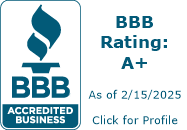
According to ATTOM data, gross profit on home flipping has fallen six quarters in a row and eight of the last 10, and now stands at the lowest level since Q4 2011. At the same time the number of flips across the country has increased to 7.3% of all sales and number of inexperienced investors has also increased. What does this tell us about the future?
The objective of “flipping” a house is to make money on the margin between what the house is purchased for + repairs and the net selling price (after holding costs, commissions, etc…). This is best understood through a quick example. Let’s say a house was acquired for $90,000 and $15,000 was put in for repairs; the house is subsequently sold for $145,000 (less 5 percent commissions and hold costs) the net profit is $32,750. Let’s say this flip took 6 months start to finish due to some unforeseen issues. The net profit is approximately 62 percent annualized over a year. Quite a nice return! There is no wonder why it seems like everyone is now a “real estate investor”.
The above example is a best-case scenario where the property was bought at the right price, repairs were minimal, and the property was sold at the right price. As you can likely suspect, best case scenarios where all the stars align are happening less frequently as gross profit on flips takes a nose dive. Unfortunately, real estate like any other industry is dictated by basic economics and the laws of supply and demand. The data on flipping is beginning to show some serious cracks in the foundation!
What’s in the data
Flipping is when someone buys a house and then within a short period of time (typically 6 months or less) resells the house generating a profit. Companies like Attom data solutions track the number of flips and gross profit on each flip (the difference between what was paid and what the house was sold for). There are some recent trends that are emerging that point to changes taking place in the overall real estate market.
- Gross profit is declining and hit its lowest level since 2011
- The number of flips is increasing to encompass 7.3% of all sales
- Home flip lending volume up 35%: The total dollar volume of financed home flip purchases was $6.4 billion for homes flipped in the first quarter of 2019, up 35 percent from $4.7 billion in Q1 2018 to the highest level since Q2 2007 — over a 12-year high.
- Inexperienced investors are increasing in the market: The fastest-growing segment of people entering the game are inexperienced flippers. CoreLogic data shows that small-time investors — people who have purchased 10 homes or fewer over the past two decades — are increasingly flipping homes rather than renting them out.
What is causing the flip market to change?
Why is gross profit declining to the lowest level in 8 years while at the same time the number of flips is increasing? This seems a little counterintuitive; investors are making less money on each property while at the same time more investors are trying to become “flippers”. This quagmire is typical “end of cycle” mentality. As we can see in the data, the number of first-time investors / inexperienced investors is increasing. New investors see where people in the past had made lots of money and decide they should try to replicate the same success, unfortunately they are too late to the party as many markets begin to soften with annual appreciation slowing considerably. Many of the experienced investors are exiting the market as the “flip” becomes crowded and considerably less profitable. This should serve as a warning sign that we are very “late cycle” in most real estate markets.
What does this mean for real estate?
“With interest rates dropping and home price increases starting to ease, investors may be getting out while the getting is good, before the market softens further,” said Todd Teta, chief product officer at ATTOM Data Solutions. “While the home flipping rate is increasing, gross profits and ROI are starting to weaken. Therefore, if investors are seeing profit margins drop, they may be acting now and selling before price increases drop even more.” In other words, the decline in home flipping is likely an indicator that many markets are beginning to soften. You should take head if you are investing in real estate and ensure you have a long-term horizon as the short term “flip” is beginning to “flop”.
Additional Reading
- https://www.chron.com/business/real-estate/article/Home-flipping-grows-increasingly-unprofitable-14452435.php
- https://www.housingwire.com/articles/50180-attom-home-flipping-returns-fall-to-8-year-low/
- https://www.attomdata.com/news/market-trends/flipping/q1-2019-home-flipping-report/
- https://www.corelogic.com/blog/2019/04/special-report-house-flipping-and-profits.aspx
I need your help!
Don’t worry, I’m not asking you to wire money to your long-lost cousin that is going to give you a million dollars if you just send them your bank account! I do need your help though, please like and share our articles on linkedin, twitter, facebook, and other social media. I would greatly appreciate it.
Written by Glen Weinberg, COO/ VP Fairview Commercial Lending. Glen has been published as an expert in hard money lending, real estate valuation, financing, and various other real estate topics in the Colorado Real Estate Journal, the CO Biz Magazine, The Denver Post, The Scotsman mortgage broker guide, Mortgage Professional America and various other national publications.
Fairview is a hard money lender specializing in private money loans / non-bank real estate loans in Georgia, Colorado, Illinois, and Florida. They are recognized in the industry as the leader in hard money lending with no upfront fees or any other games. Learn more about Hard Money Lending through our free Hard Money Guide. To get started on a loan all they need is their simple one page application (no upfront fees or other games).
